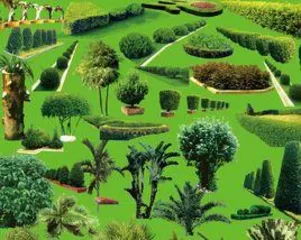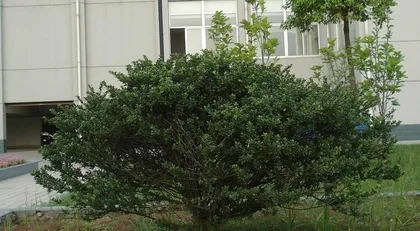Shrub plants are common in our lives, but do you know if they fall under the category of woody plants? This article will explore the classification characteristics and ecological adaptability of shrubs. Let's take a look.

Plant Classification Methods and the Definition of Shrubs
There are many methods for classifying plants. Based on the morphology and structure of the plant body, they can be divided into cytological classification and morphological classification. A shrub is a concept within morphological classification, defined as a plant generally 1-5 meters in height, with many branched, erect or climbing stems, usually with relatively thin stems, and typically being a woody plant.
Morphological Characteristics of Shrubs
1. Generally 1-5 meters in height, with low shrubs under 0.5 meters and taller shrubs reaching over 10 meters.

2. Many branched stems, with an inconspicuous main trunk and a large number of small branches between the stems.
3. Stems are usually relatively thin, either erect or climbing.
4. Leaves are generally small, mostly oval or oblong.

5. Flowers and fruits vary in size and shape, and are usually relatively small.
Classification of Shrubs
According to botanical classification, shrubs can be divided into monocot shrubs and dicot shrubs. Among them, monocot shrubs have flat stems and leaves, such as bamboo and roses; dicot shrubs have more robust stems and leaves, such as poplar and maple trees.
Ecological Adaptability of Shrubs
1. Adaptation to arid environments: Shrubs have well-developed root systems that can grow deep into the groundwater layer, making full use of water resources.
2. Adaptation to low-temperature environments: The stems of shrubs have abundant vascular tissue, which can increase their cold tolerance.
3. Adaptation to infertile soil: Shrubs have well-developed root systems that can fully absorb nutrients in poor soil.
4. Adaptation to mountainous environments: Shrubs usually grow in mountainous and hilly areas, and their stems, roots, and leaves have wind resistance.
Ecological Functions of Shrubs
1. Soil and water conservation: The well-developed root systems of shrubs can fix the soil and prevent soil and water erosion.
2. Water conservation: The extent of the developed root systems of shrubs also allows them to conserve water, preventing it from easily flowing out.
3. Environmental greening: The leaves of shrubs come in a variety of colors, which can play a role in beautifying the environment.
4. Habitat provision: The gregarious nature of shrubs makes them a habitat for many animals, such as birds and insects.
Application Value of Shrubs
1. Edible value: Such as persimmons and wolfberries, they not only have nutritional value but also can play a role in nourishing blood and kidneys.
2. Medicinal value: Such as holly, camellia, and mulberry leaves, they have certain medicinal effects and can be used to treat various diseases.
3. Ornamental value: Shrubs come in various shapes and vibrant colors, becoming the main landscape of many garden scenic spots.
4. Economic value: Such as poplar and camphor trees, they can be used to make furniture, building materials, etc.
Reproduction Methods of Shrubs
Shrubs have two reproduction methods: seed propagation and asexual propagation. Seed propagation requires seeds for reproduction, while asexual propagation is carried out through methods like cuttings and division.
Cultivation and Management of Shrubs
The cultivation of shrubs needs to pay attention to the following points: 1. Choose a suitable cultivation environment; 2. Prune branches in a timely manner to maintain a beautiful shape; 3. Fertilize regularly to ensure adequate nutrition; 4. Pay attention to the prevention and control of pests and diseases to ensure healthy growth.
Maintenance of Shrubs
During the growth process, shrubs also require some maintenance work, including pruning branches, watering, fertilizing, and pest and disease control. Especially in winter, it is necessary to pay attention to their cold resistance to avoid frost damage.
Landscape Application of Shrubs
Shrubs can play various roles in garden landscapes, such as greening and beautifying, and providing habitats. Different types of shrubs can also be combined to create richer landscape effects.
Ecological Protection of Shrubs
As an important part of the ecosystem, shrubs need to be effectively protected and managed. In the natural environment, it is necessary to protect their ecological adaptability and maintain their status in the ecosystem.
Representative Species of Shrubs
There are many types of shrubs, and common ones include poplar, persimmon, citrus, rose, lilac, etc.
Cultural Connotation of Shrubs
Shrubs also have a certain cultural connotation in human culture, such as the description of the Purple Gold Gourd shrub forest in "Journey to the West".
Application of Shrubs in Urban Greening
With the process of urbanization, shrubs are also playing an increasingly important role in urban greening, with functions such as greening the environment, purifying the air, and protecting the ecology.
Although shrubs are small plants, they have extensive application value and ecological functions. We should protect this important component of shrubs and let them play a more important role in the ecosystem.